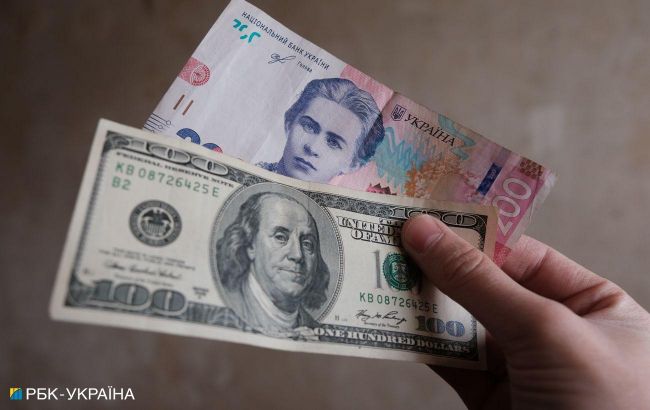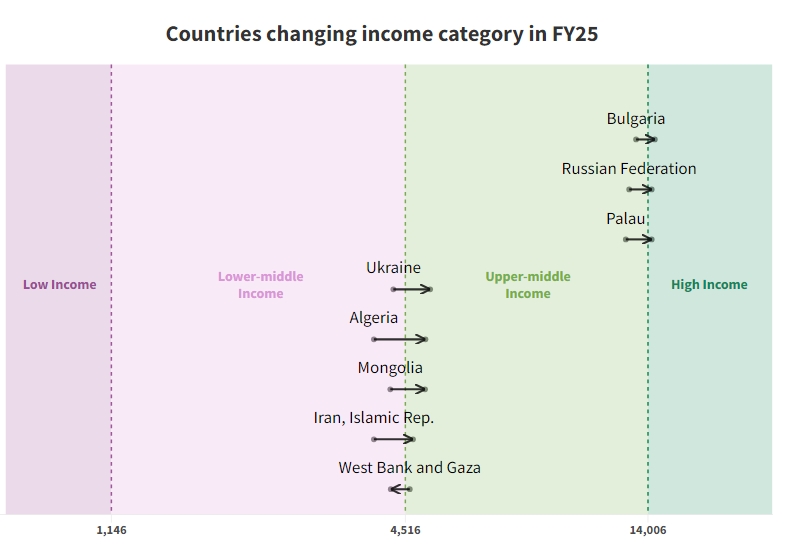World Bank moves Ukraine to upper-middle-income group of countries
 Illustrative photo (RBC-Ukraine)
Illustrative photo (RBC-Ukraine)
The World Bank moved Ukraine into the group of countries with upper-middle incomes. The estimate of income in terms of purchasing power parity has been raised from $4,270 to $5,070 per capita, according to the WB report.
The upgrade of Ukraine's rating was the result of the resumption of economic growth in 2023 (real GDP grew by 5.3% after falling by 28.8% in 2022), along with a population decline, which has fallen by more than 15% since the beginning of the Russian invasion.

The World Bank has moved Ukraine to the group of countries with upper-middle incomes (worldbank.org)
These factors were further reinforced by rising prices for domestically produced goods and services, which led to a significant increase in nominal gross national income (GNI) per capita by 18.5%, the report says.
While Ukraine's economy was weakened greatly by Russia's invasion, real growth in 2023 was driven by construction activity (24.6%), reflecting a large increase in investment spending (52.9%), supporting Ukraine's efforts to recover from the ongoing devastation, the World Bank notes.
In the current fiscal year 2025, low-income countries are defined as countries with a GNI per capita, calculated using the World Bank method, of $1,145 or less in 2023; lower-middle-income countries are those with a GNI per capita of $1,146 to $4,515; upper-middle-income countries are those with a GNI per capita of $4,516 to $14,005; and high-income countries are those with a GNI per capita of more than $14,005.

(worldbank.org)
According to the National Bank of Ukraine, the real incomes of the Ukrainian population in 2024 are growing due to higher wages and pensions, and lower inflation.
As of June 2024, 37% of Ukrainians assessed the level of well-being of their families as poor, 47% as neither poor nor good, and 14% as good.

